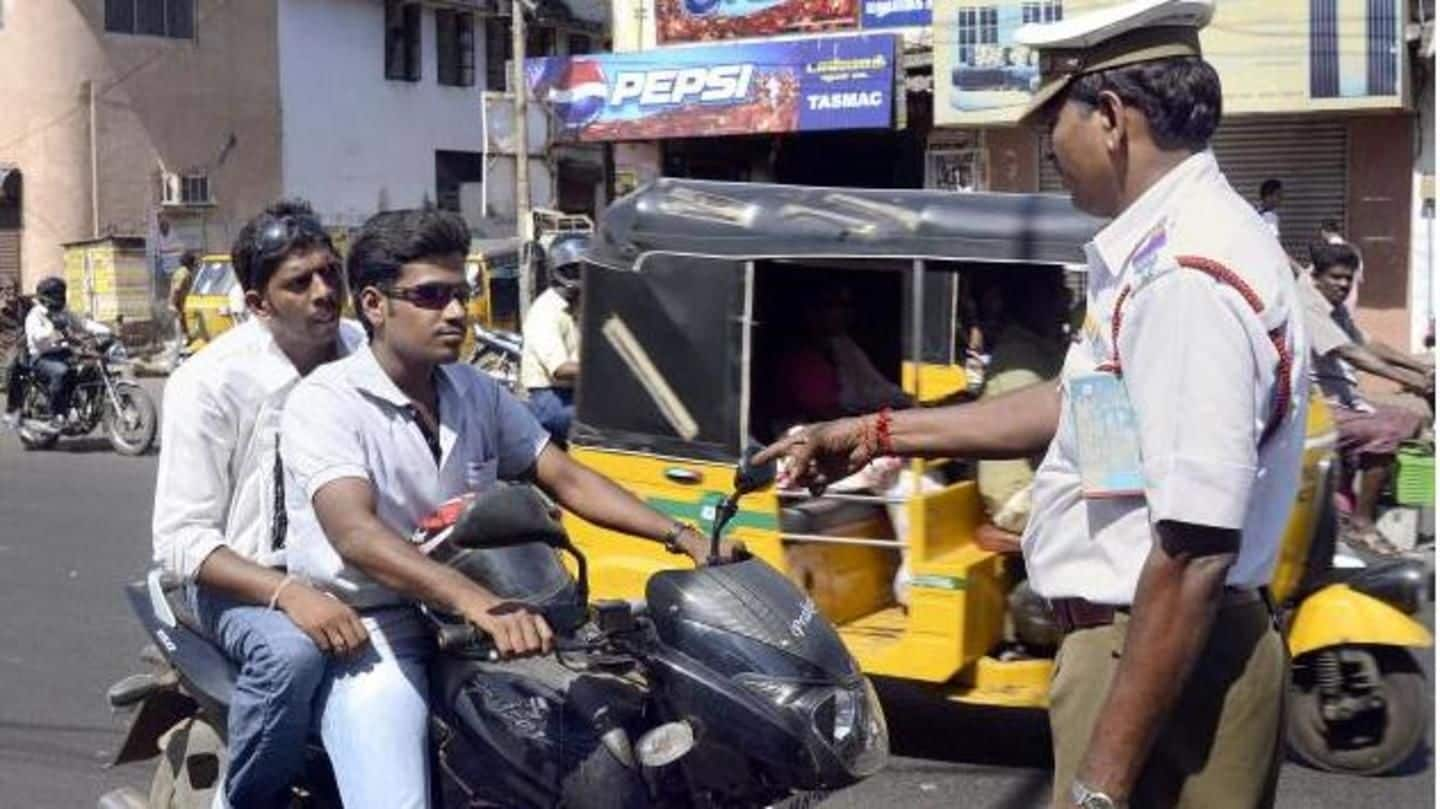
Hyderabad Police to take AI's help to catch traffic violators
What's the story
People not wearing helmets is a persistent problem faced by traffic police force countrywide. To curb that, some take Yamraj's help while some conduct workshops. But Hyderabad traffic police went a step ahead. It's taken help of artificial intelligence to track defaulters, the set up of which'll be provided by IIT-Hyderabad. The technology has been put to test and is ready to be deployed.
Details
IIT-Hyderabad will have access to police's CCTV network
As per the MoU between IIT-Hyderabad and Hyderabad police, the institute will have access to the force's CCTV network. The whole set-up involves a solution, CCTV cameras, police control room and servers. The solution will be installed partially in cameras and in the servers of the central police control room. A card will be attached to the cameras, which will also have embedded software.
Process
Central database will get alert, automatic verification to follow
Using AI the software would detect a violator and send out an alert to the central database. The web interface of the fully automatic system will help police verify alerts. After verification, concerned RTO will be contacted for challan-generation, and the violator will be sent a text message regarding fine amount. The system will be put up at toll gates, select checkpoints, road-intersections, etc.
Explanation
'The system will use convolutional neural network technology'
One of the research scholars, Dinesh Singh explained the solution would use convolutional neural network technology, a type of machinery inspired by biological processes. The technology helps analyze visual images, by using the AI to mimic human brain. Apart from people not wearing helmets, it can also detect other traffic violations, like zigzag bike driving, tripling, etc, he added.
Further
The researchers have applied for patent, approval pending
IIT-Hyderabad associate professor C Krishna Mohan informed testing was done inside campus and on dense traffic lanes. "The results are motivating us to develop the complete software to deploy it for real-world use," he added. Krishna, Singh, Debaditya Roy and C Vishnu are behind this innovation. They've applied for patent, which is pending. IIT also wants to make the technology commercially-available.